Battle of the Sexes Star Bill Pullman Has a Fruit Orchard for a Backyard
Chances are good that Bill Pullman has appeared in at least one of your favorite movies. Since 1986, the actor has been building a lengthy résumé that includes blockbusters like Spaceballs, A League of Their Own, Sleepless in Seattle, While You Were Sleeping, and Independence Day. This month, he adds Battle of the Sexes to his portfolio of work. The sports comedy-drama is loosely based on the 1973 tennis match between Billie Jean King and Bobby Riggs. Pullman appears as former tennis champ Jack Kramer, alongside Emma Stone as King and Steve Carell as Riggs.
But, as ubiquitous as Pullman is, it's rather unlikely you're familiar with his passion for house restoration—as well as exotic fruits. In 1991, Pullman and his wife, Tamara, found a nearly 75-year-old house in Los Angeles's Beachwood Canyon area. "I had really looked," Pullman explains. "The land was my number one, as large of a lot as possible, and if it could have a south-facing slope, since I knew I wanted a terrace and an orchard. In the middle of things, my wife came across this place that had a house on it that was built in 1917."
Admittedly, the house was not their dream property. Ideally, the Pullmans had been seeking a home in the Arts and Crafts style, "like those 1910 California homes in Bronson that were nearby." Four bedrooms were also a necessity for the family of five, and according to Pullman, to call the upper structure a second story would be somewhat of an exaggeration. Instead, he dubbed it a small cabin. "In the 1940s, they did some jackknife carpentry and did a second story, so the whole thing looked sort of mismatched," he says.
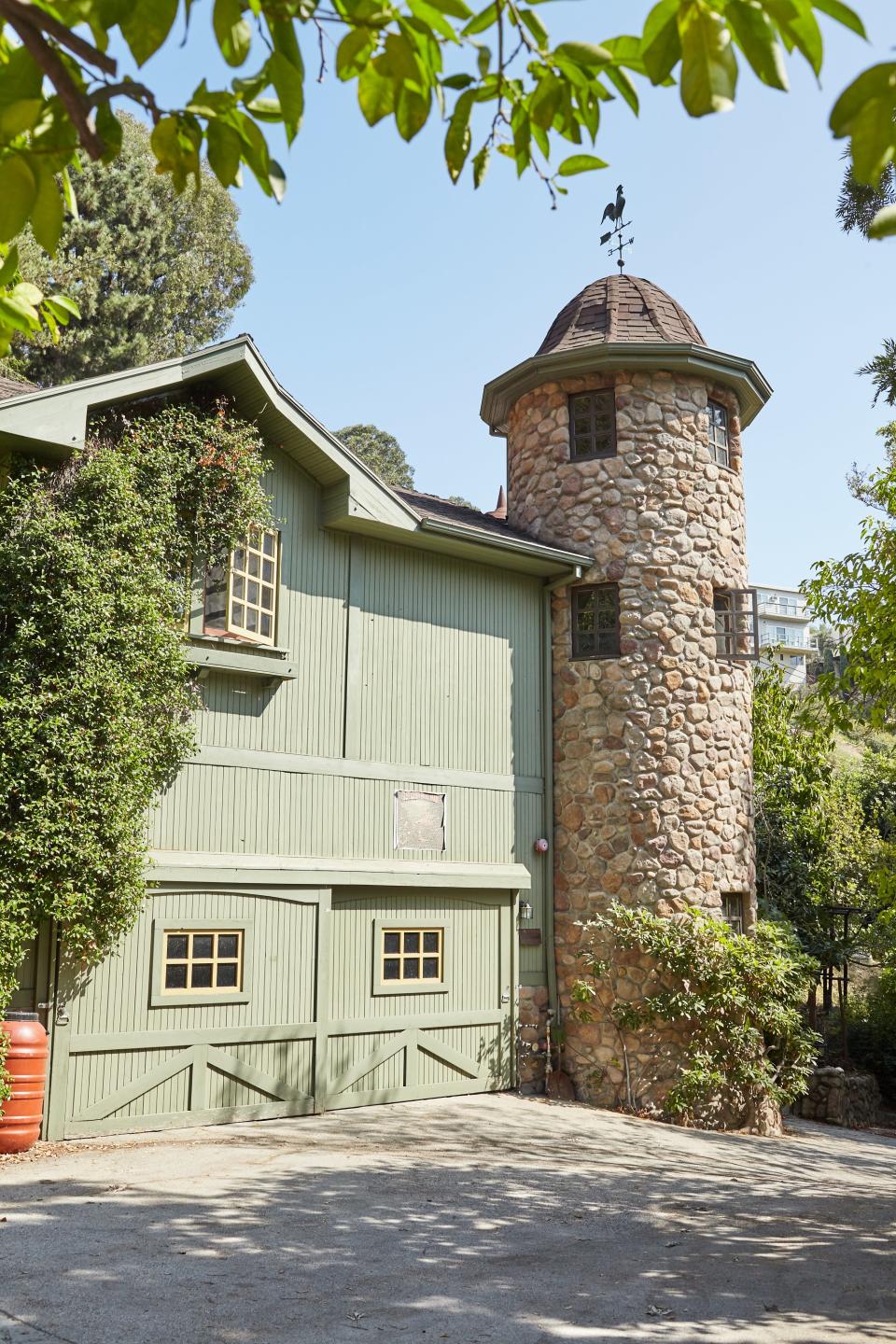
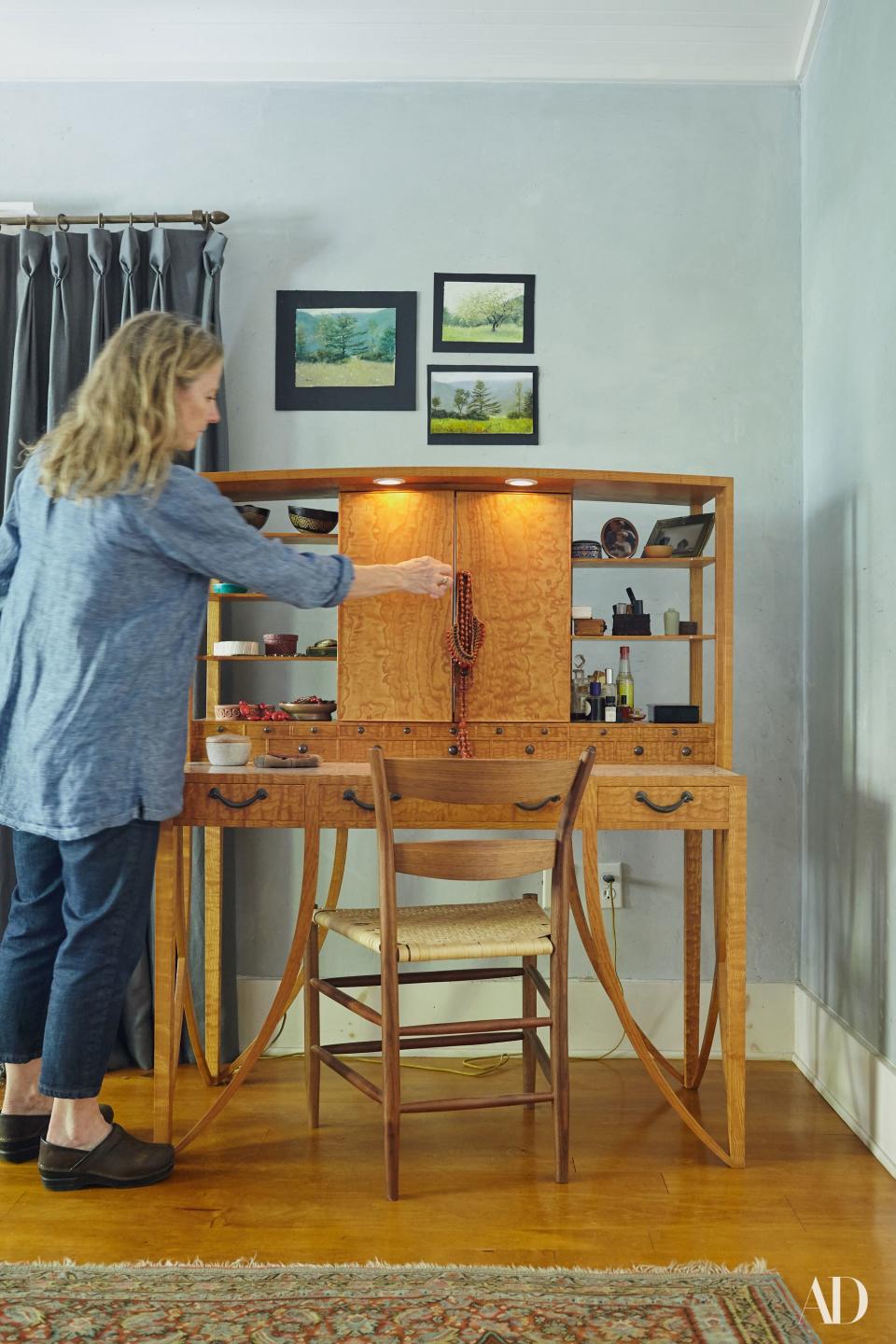
But while most Arts and Crafts–style homes in the area are on small lots, this property is on two and a half acres, which Pullman found very appealing. "So we proceeded with the idea that we could sort of just rip off the second story and rebuild it," he explains. It wasn't that easy, however. The couple's initial plan was to keep the original footprint of the Baja-style house, with the exception of the staircase, and build from the existing foundation. But after one inspector said the foundation was bad and another said the dirt was bad, Pullman says they had to come up with a new plan. "We ended up just keeping a perimeter wall of the first floor of the house that was there," he laughs.
Visitors to the property would never be able to tell, however, since Pullman and Tamara, his wife of 30 years, have painstakingly built and decorated a home—without the help of a designer—that looks like it has been preserved from a past era. "It took us two years to do the house, then we built the barn next door, and that was another year and a half," he says.
Organization was key. "We kept a lot of hanging files of what we liked about this period, and this book of Carl Larsson's ideas," he says. The Swedish painter, known for his work during the Arts and Crafts movement, influenced how the couple chose a color palette for the home. "Most Arts and Crafts homes on the West Coast are influenced by Japanese ideas, including stained wood, but we really liked this European idea of painted wood," he says. Preservation also came into play. The chimney that had previously been in the home was replicated and rebuilt in the same place with nearly identical measurements. Pullman also worked to salvage all the light sockets that were in the existing fixtures instead of replacing them, since the couple found the large, turn knobs appealing. "This was just before the rise of readily available reproductions of lighting," he explains. "So, I was berserk—I can't believe I did this and held down jobs—because we saved all the sockets and I brought them to this place in Vernon and had them copper-plated."
"I got the whole place to start the orchard. … I was always amazed you could have fruit year-round in Los Angeles, so I started going around to these exotic fruit nurseries in Los Angeles."
The D.I.Y. aspect of their new home went even further. "Those sconces above the chimney are ones I pieced together myself; I made a lampshade from raw pieces—I pounded it with a hammer and I put vinegar on it to let it rust," he says. "It was crazy, he says, "but it was such a joy to make this house ourselves and not have somebody tell us what to do with it."
They also relied on Liz's Antique Hardware ("oh, my God, it's still there, even!") to get the little details they couldn't find on their own. "In a way you'd go to the flea markets to get things, but you'd find Liz from Liz's Antique [Hardware] had been there at 6 in the morning or a buyer for her had two hours ago," he explains. Handmade ceramic Pratt & Larson tile was purchased from Country Floors, along with select specialty tiles from Ceramic Manufacturing in Ohio. "We have all these tiles that are embedded around the house that have different animals on them, like deer and squirrels and bears, that was kind of an intoxicating thing to come across," he explains.
The couple took a similarly thrifty approach when outfitting the house with furniture: They used reupholstered pieces from Pullman's parents in the dark-stained natural wood library and television room. Pieces from Tamara's brother, furniture designer Michael Hurwitz, like the round chairs in the hall, were placed throughout the home. And porch furniture from the 1930s, made of stained wood with painted decorative floral patterns, was purchased from a secondhand store behind a grocery store. An O'Keefe & Merritt stove from 1954 gives character to an already eccentric kitchen, and like many of the pieces in the Pullmans's home, even this one has a story to tell: "This is an unusual one, that the ovens are set on the left-hand side."
Bill Pullman Takes AD Inside His Beachwood Canyon Home and Orchard

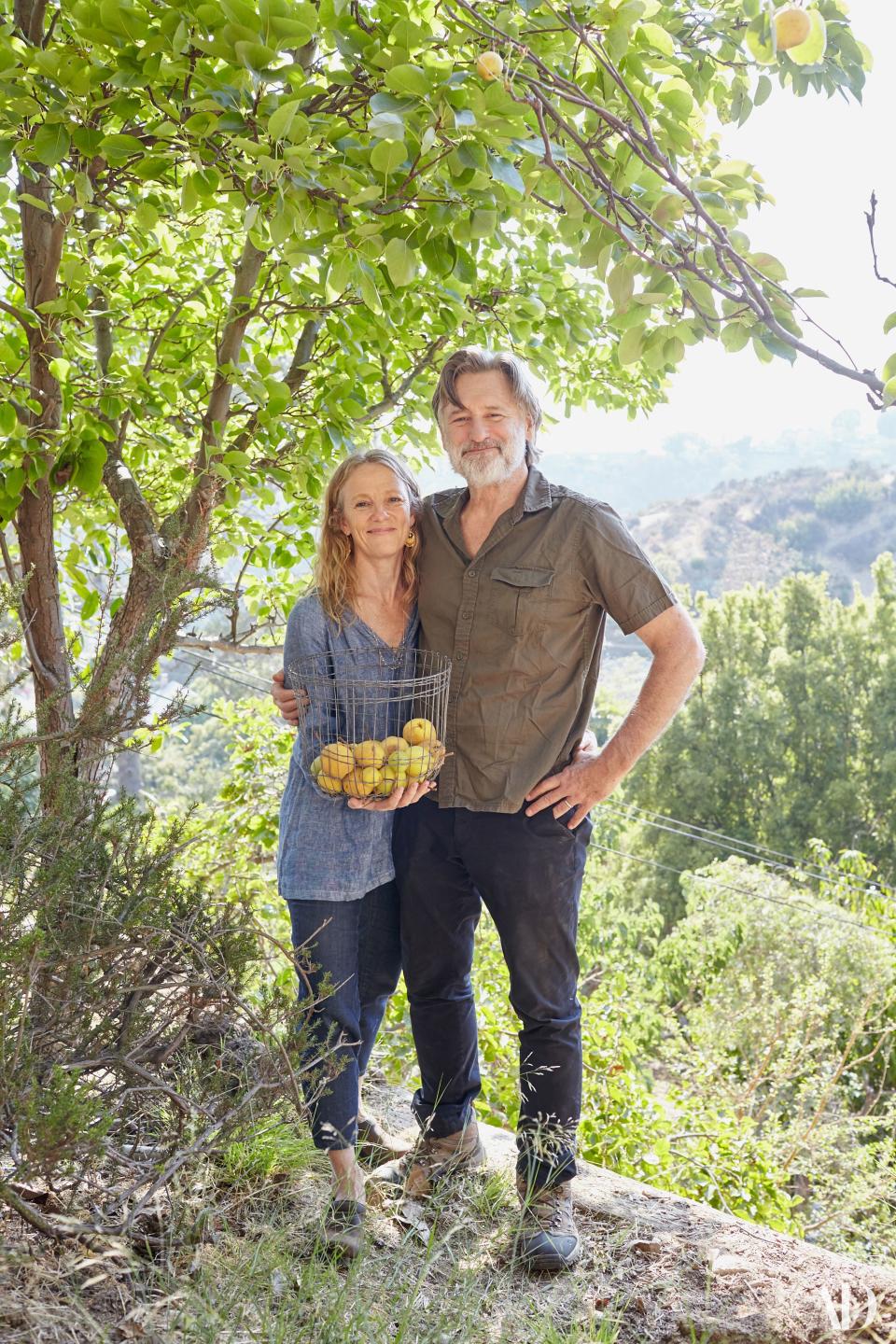
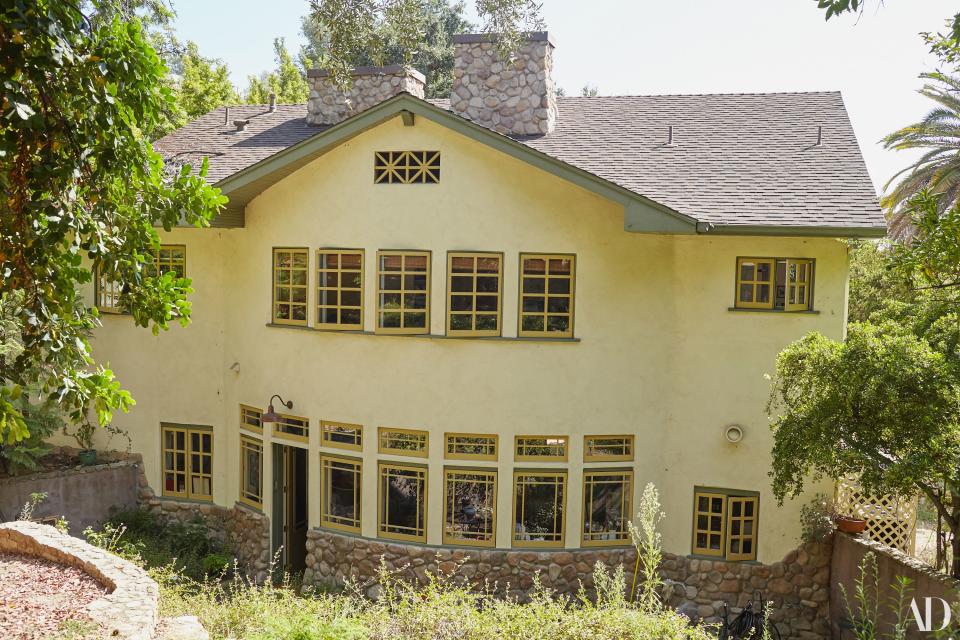
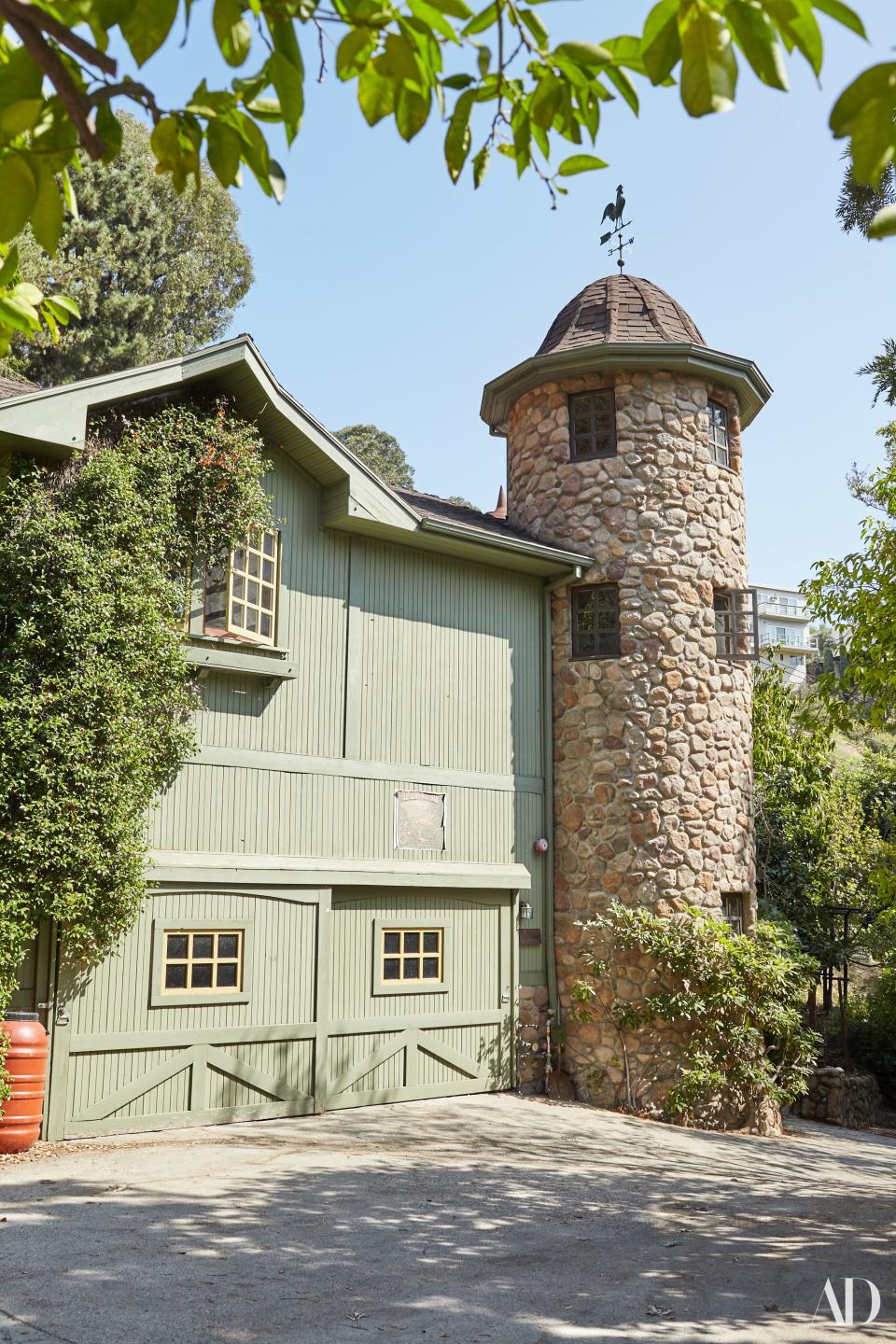
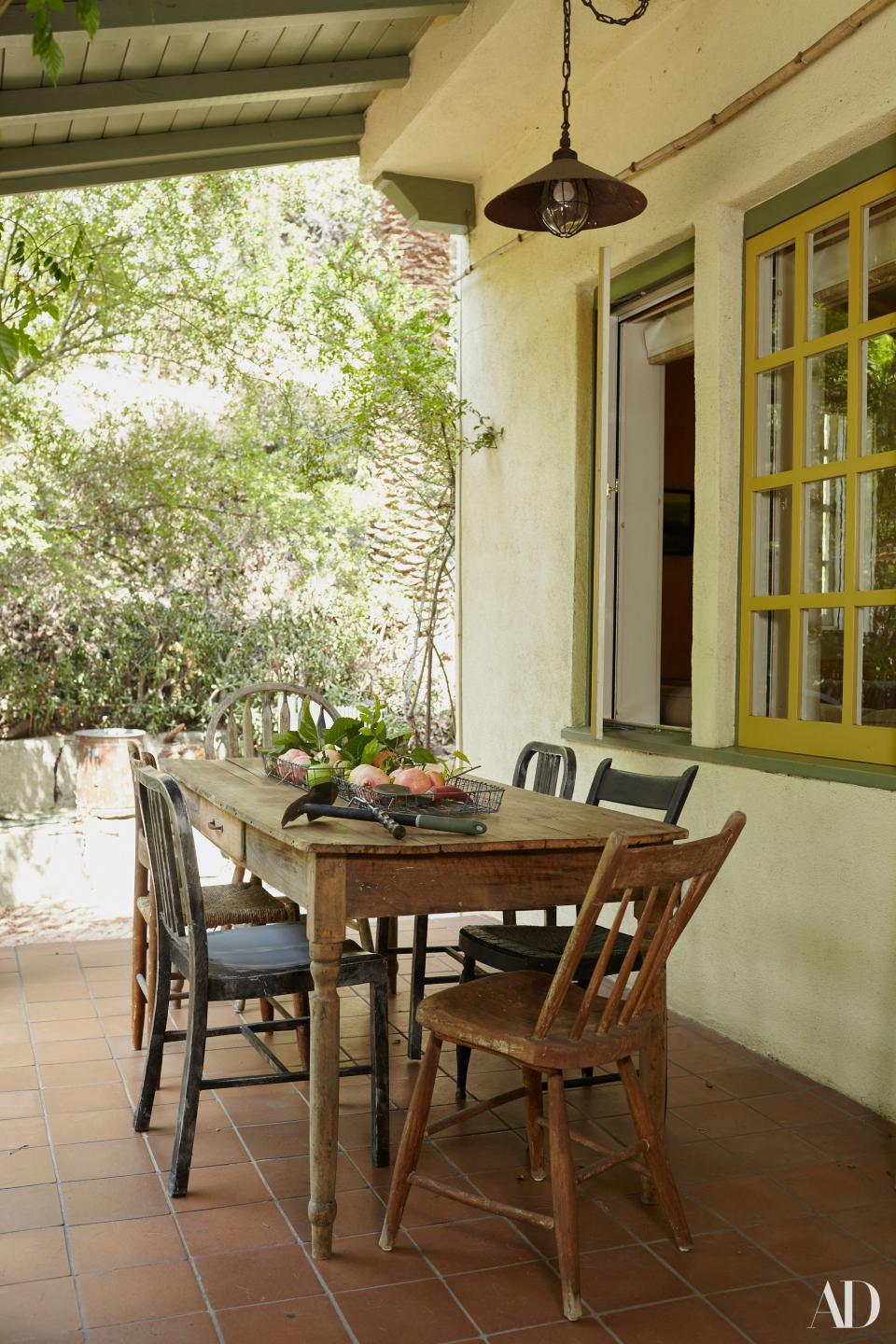
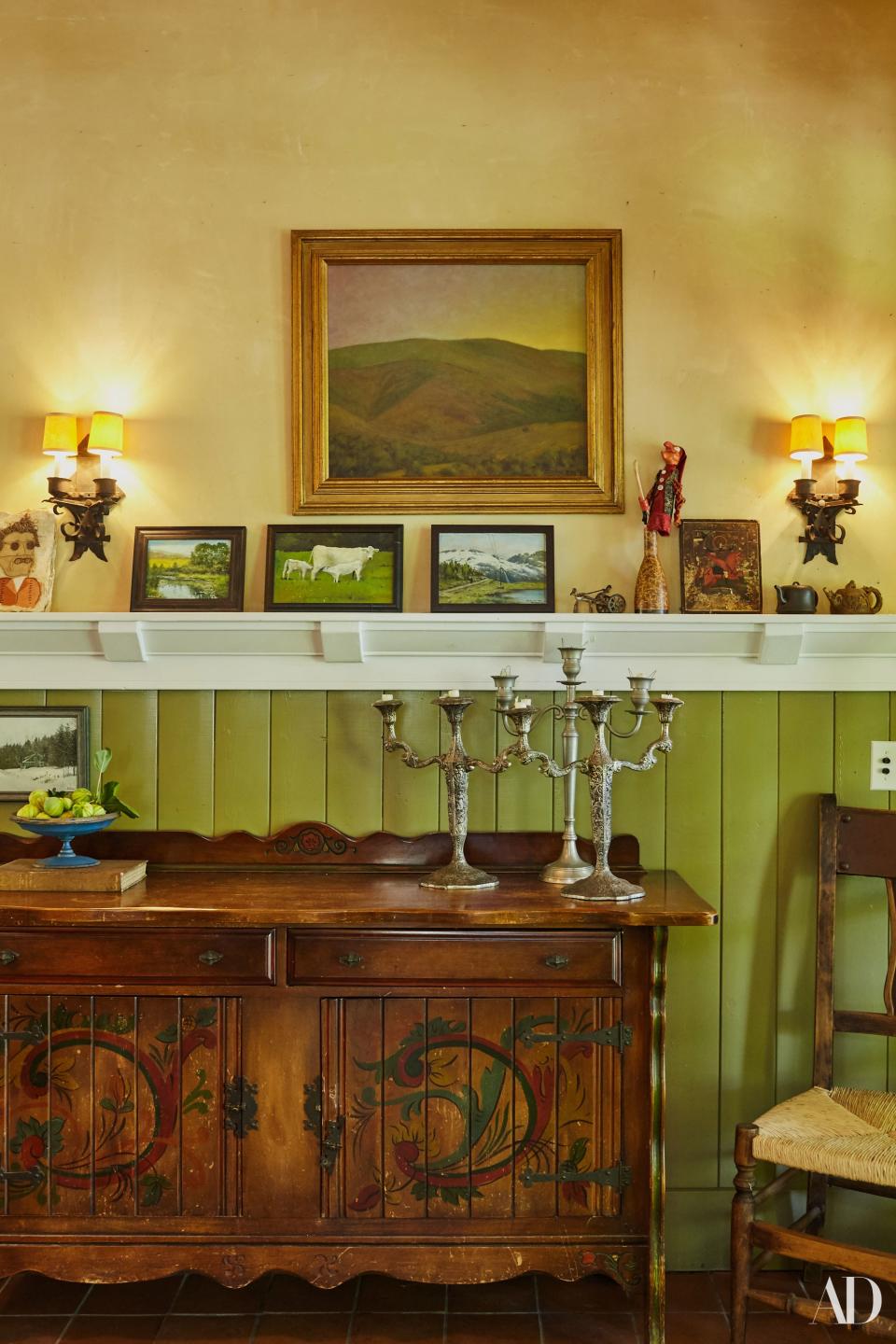
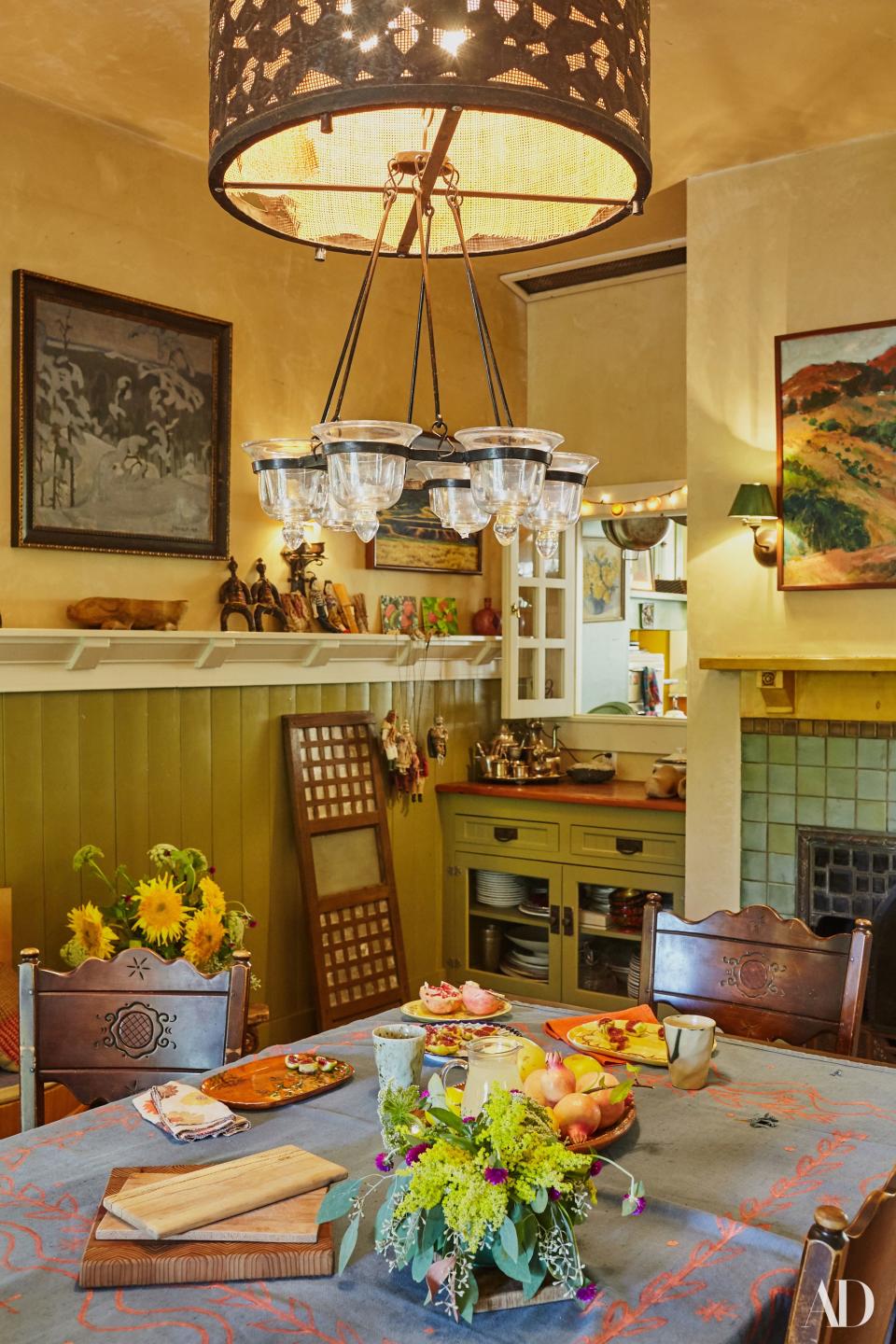
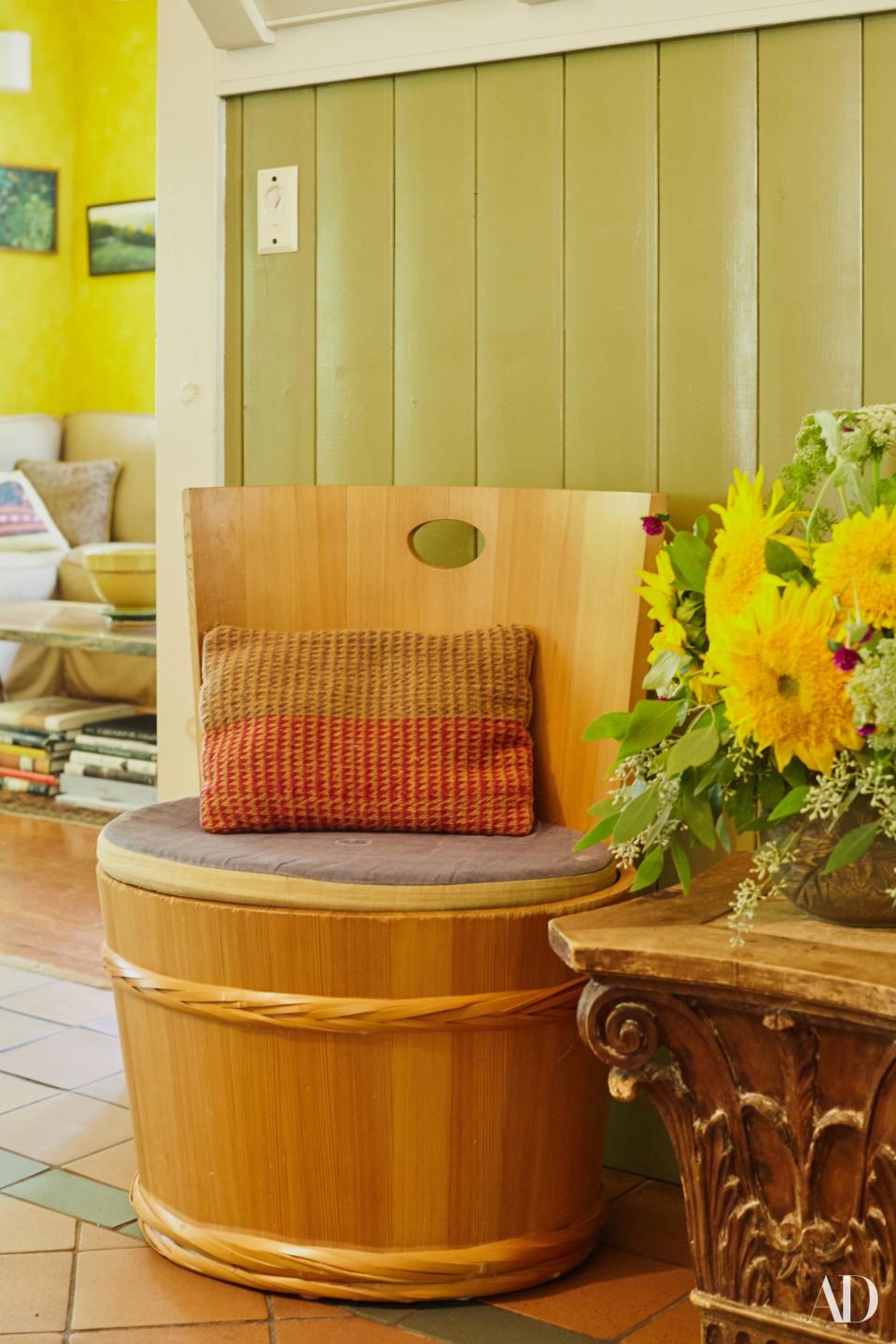
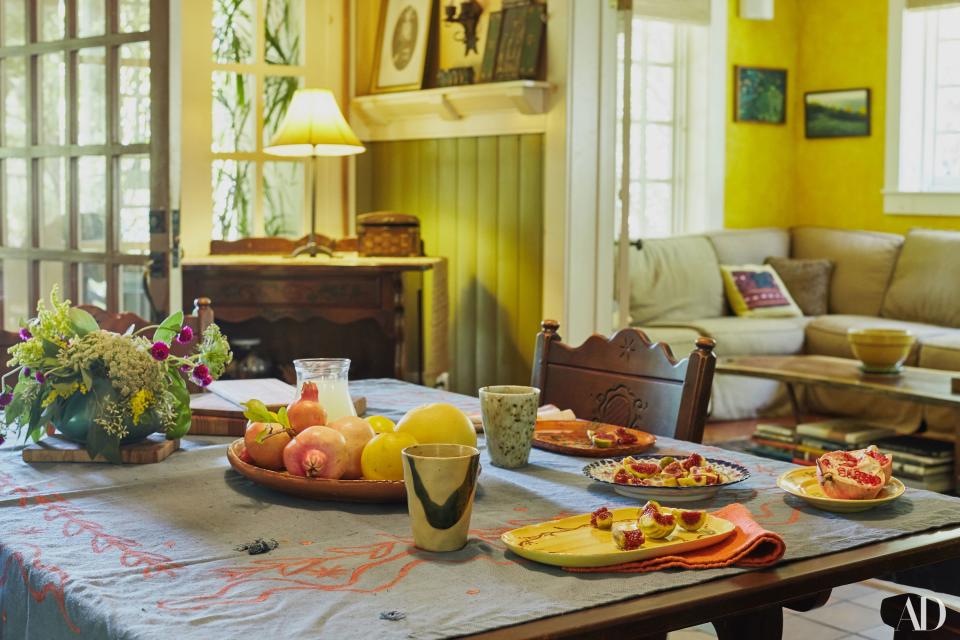
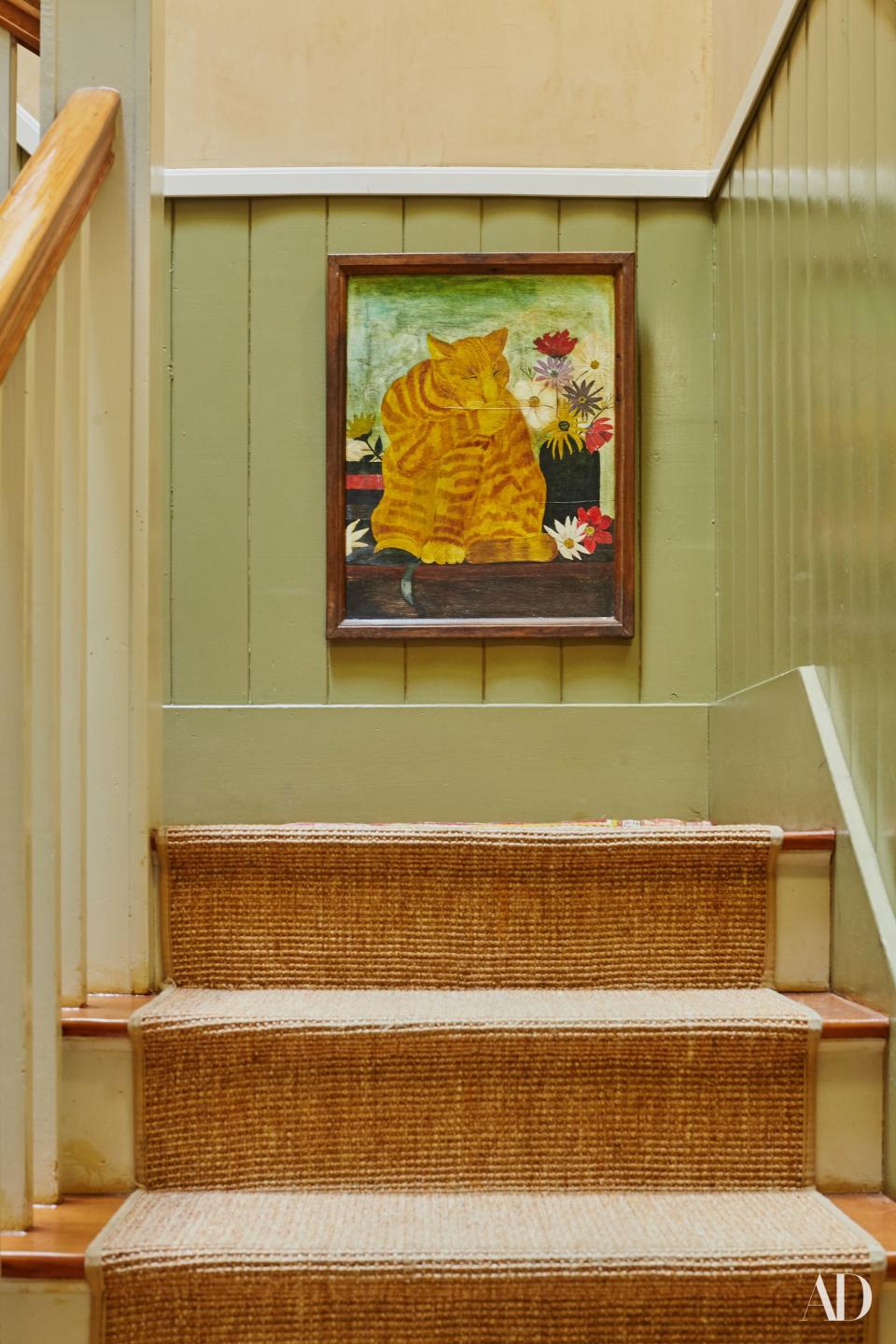
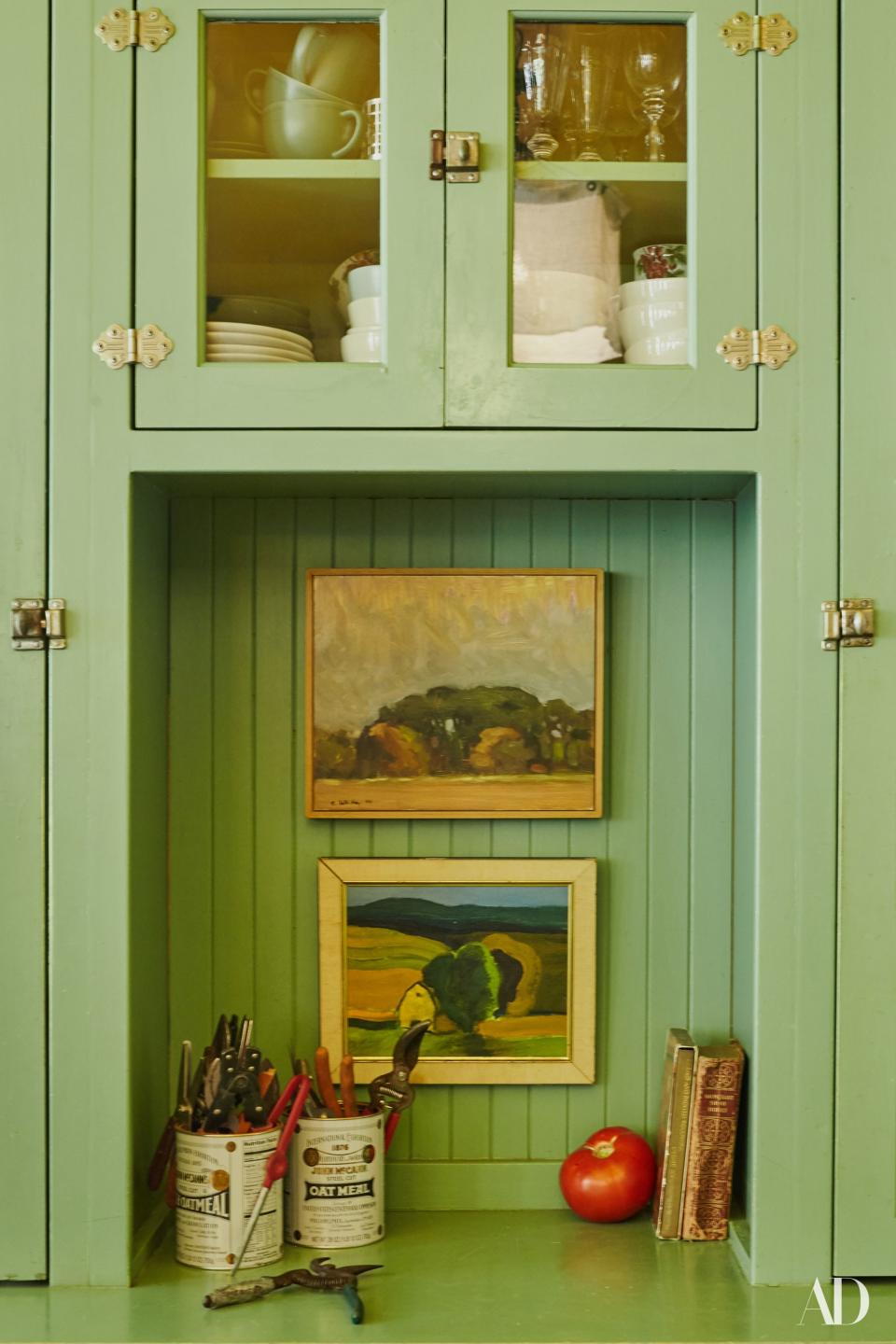
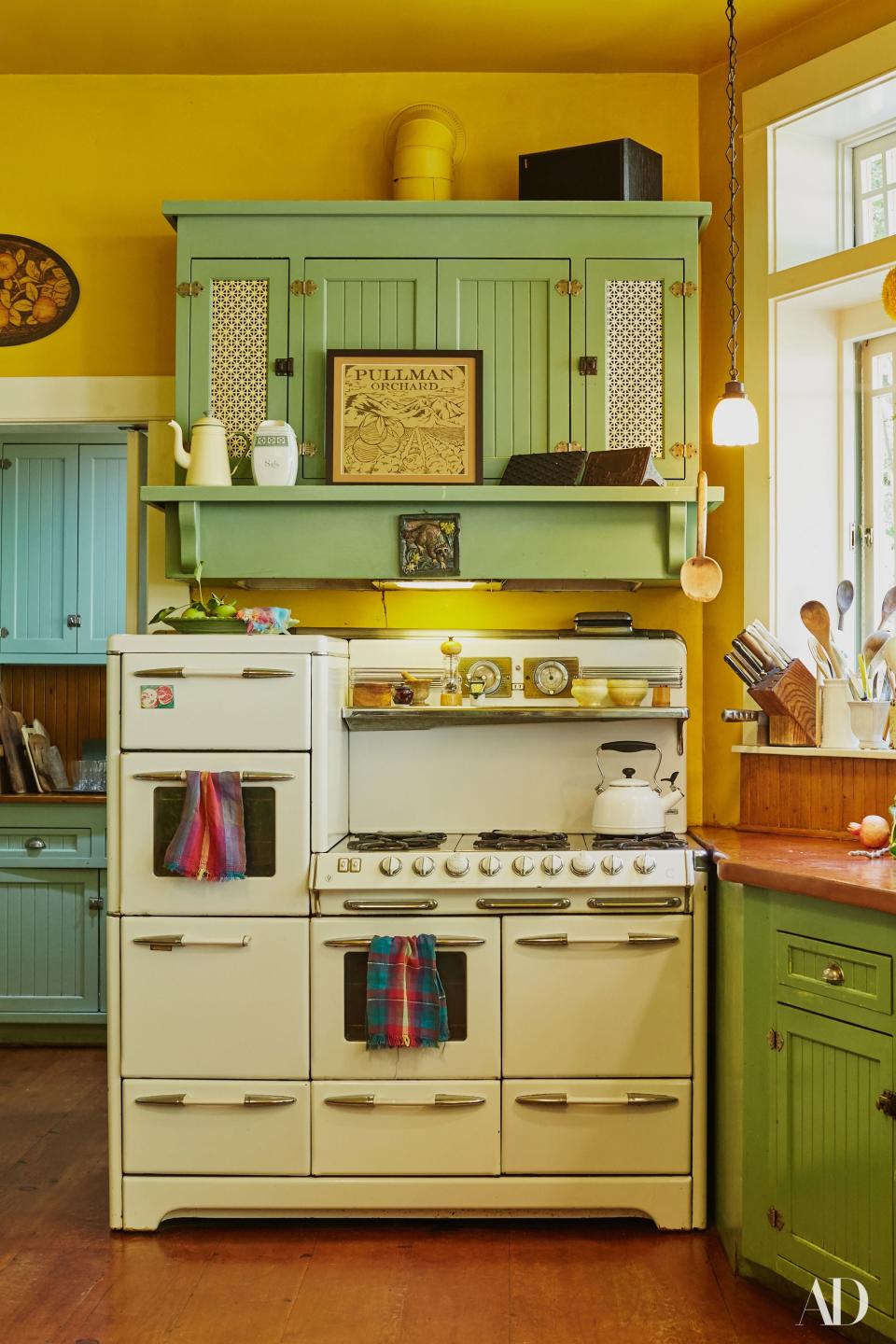

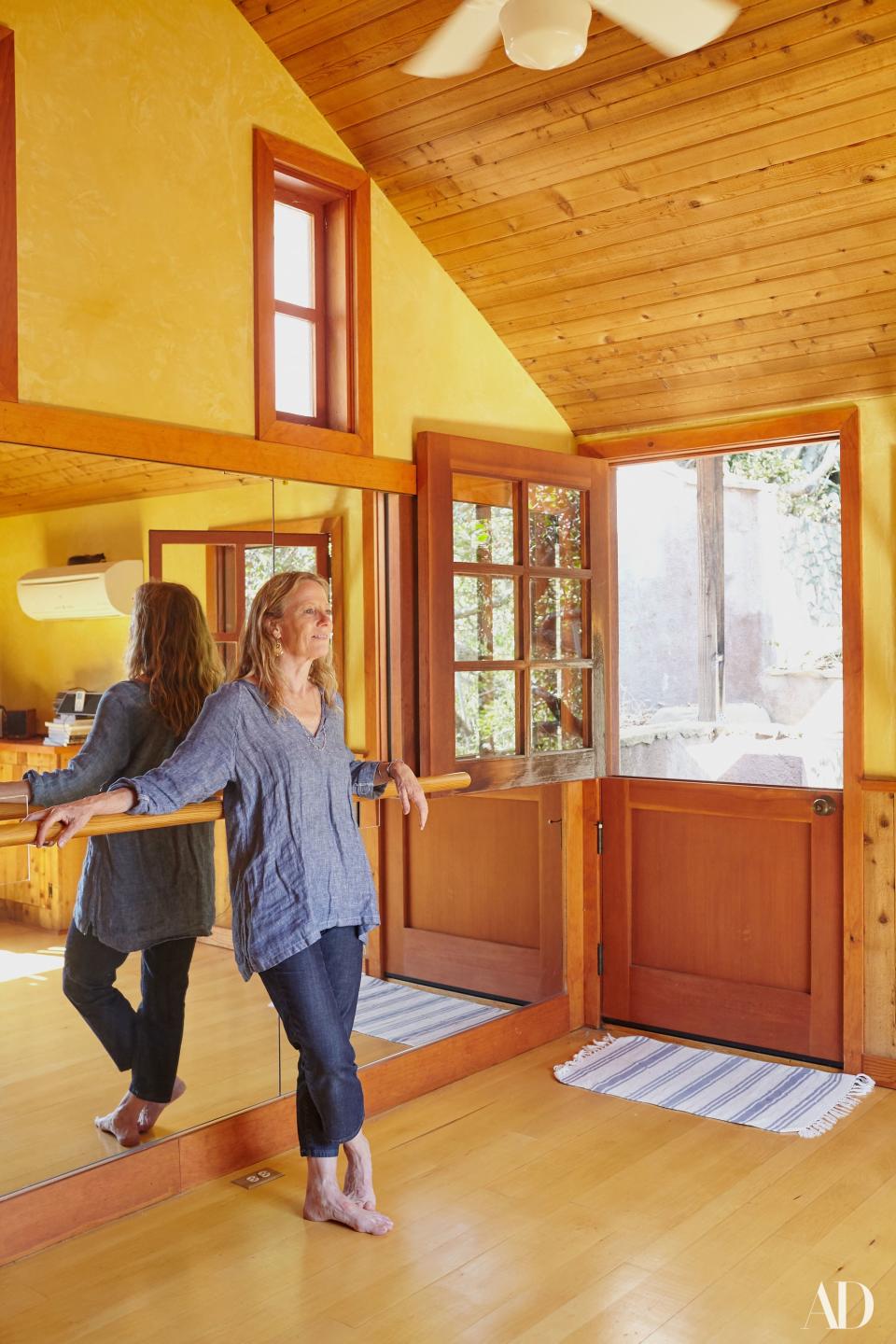
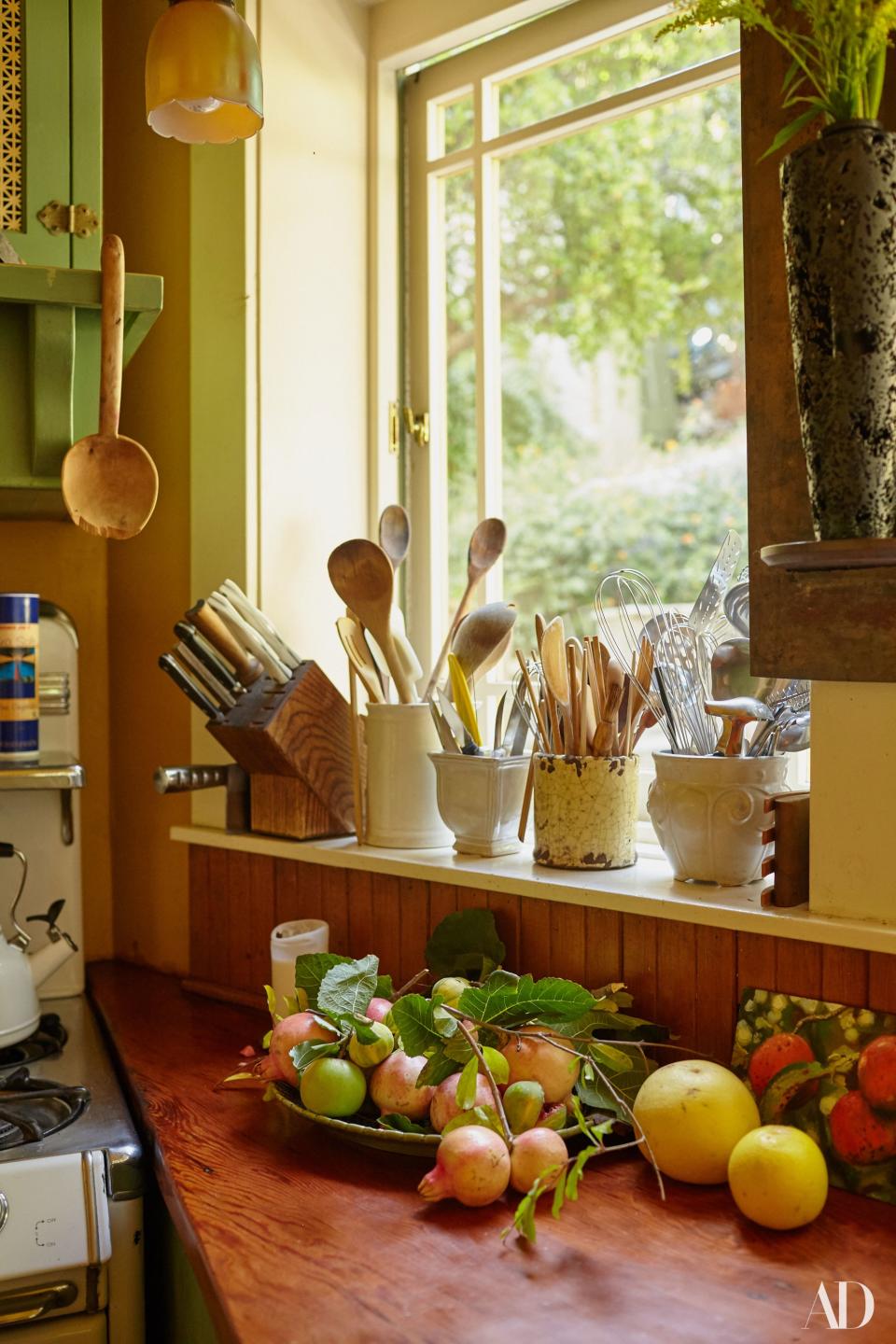
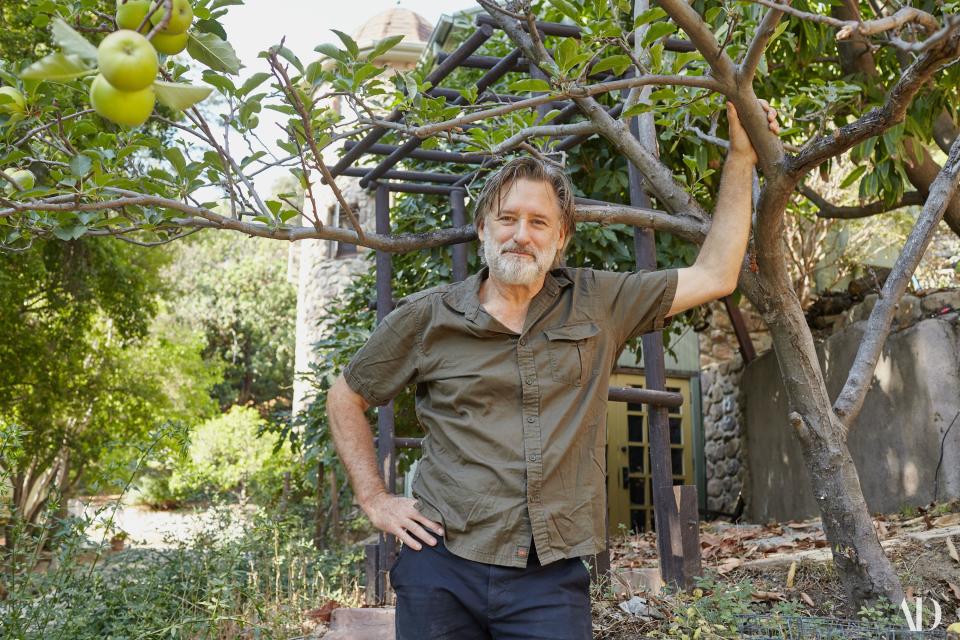
On top of the architectural research the actor did while restoring his home and the neighboring barn, he also researched the agricultural systems of Los Angeles in 1910. In fact, the two-and-a-half-acre property is zoned for two and a half hoofed animals ("I loved that idea we could get goats to do the orchard's hillside clearance, and that it could really big holistic," says Pullman). The tie-in was important to him, because "the house became a big part of what the orchard does." In 2011, the couple started Hollywood Orchard, a volunteer nonprofit dedicated to harvesting, using, and donating local fruit—a vision they call "tree-to-table." With their neighbors and local celebrity chefs, the Pullmans hold annual events, for which they harvest the fruit and use it in pop-up kitchens, often held in their neighborhood cul-de-sac. Whatever fruit remains it donated to local charities.
"When we started, we were doing things in our front yard and out of our garage. We just focused on how the house would operate as part of a farm," says Pullman. "It really achieved its full character when we got that going." But, alas, despite at one point having a handful of chickens, Pullman's orchard and barn are still waiting on those hoofed animals. "We never did get goats," says Pullman. "I travel too much!"

